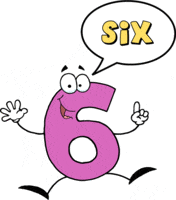Identifying Groups of 6 to 10 Worksheets
Learning how to group or share things in a group is a concept that can capitulate a student forward with many different math operations. It lends itself pretty well to the concept of division and sharing things in fixed units. It also helps us enter the world of comparisons and the raw concepts of greater or less than. As you navigate this section you will quickly realize that the all of the values we work with are set in the range of 6 to 10. This awesome selection of worksheets and lessons shows you how to pick out groups made up of somewhere between six and ten objects.
Aligned Standard: K.CC.B.5
- Alligators or Jokers Step-by-Step Lesson - Yes, the jokers are bananas. At least, I think so.
- Guided Worksheet - Find the groups that fit the target number.
- Guided Explanation - I finally caught on and numbered the answers on both sides.
- Independent Practice Worksheet - Once again, we are looking for target numbers. I wrote directions for every problem.
- Matching Worksheet - Using larger numbers (for the preschool level). Match numbers to groups of items.
- Answer Keys - These are for all the unlocked materials above.
Practice Worksheets
Remember, these are considered larger numbers for this level. Take your time with them.
- Practice 1 - How many ice‐cream bars are there below?
- Practice 2 - Count the objects in each group. Circle the group that has 7.
- Practice 3 - Which of these groups is made up of six?
- Practice 4 - Count the number of things in each group below.
- Practice 5 - How many things are there?
- Practice 6 - Count how many candies there are.
How to Sort Objects in a Group

Sorting is one of the basic concepts that help children in learning numbers. Sorting can be carried out with or without the use of numbers. They can utilize different objects to practice sorting such as identifying objects and putting them in distinct groups. Children need to fully understand the concept of sorting before they start working on numbers because it is essential to recognize what to count before actually being to count.
Sorting includes identifying and finding items that are alike and putting them in a group by their particular attribute. To help you get started on this fundamental pre-number concept, we have listed the different ways:
1. Lay out items in different colors and let youngsters carefully examine them. Once the curious minds have observed and examined the items, encourage them to identify the items according to their colors. You can ask them to stack the objects rather than laying them out in groups. This will prompt observation and enhances color differentiation.
2. Spread out items of varying sizes on the surface and mix them. Give some time for observation and ask children to categorize them in groups of similar sizes. You can also help children identify different patterns through. This will encourage sorting and pattern recognition.
3. You can also use number cards for sorting purposes. Lay the number cards face down and prompt children to arrange them in the correct number order.